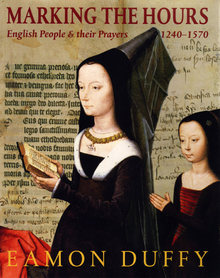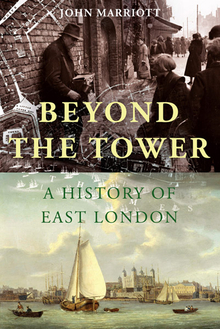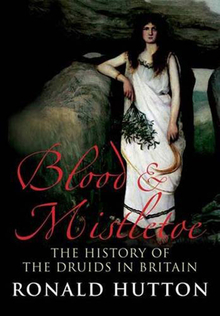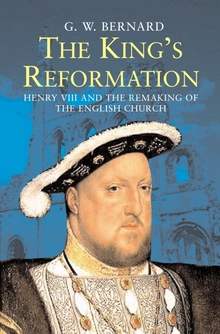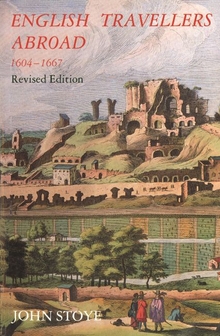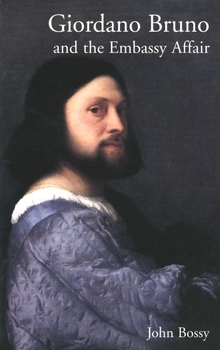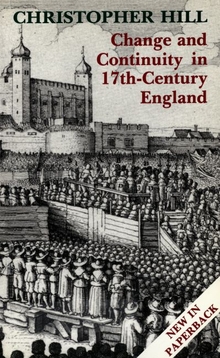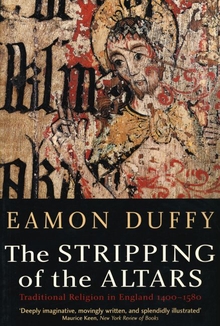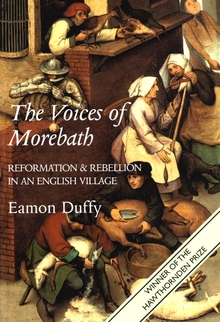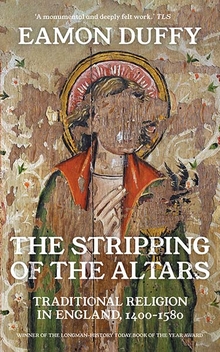Marking the Hours
WARNING
You are viewing an older version of the Yalebooks website. Please visit out new website with more updated information and a better user experience: https://www.yalebooks.com
English People and Their Prayers, 1240-1570
Eamon Duffy
Personal prayer books and the jottings in their margins tell us about their owners and about life in late medieval and Reformation England
In this richly illustrated book, religious historian Eamon Duffy discusses the Book of Hours, unquestionably the most intimate and most widely used book of the later Middle Ages. He examines surviving copies of the personal prayer books which were used for private, domestic devotions, and in which people commonly left traces of their lives. Manuscript prayers, biographical jottings, affectionate messages, autographs, and pious paste-ins often crowd the margins, flyleaves, and blank spaces of such books. From these sometimes clumsy jottings, viewed by generations of librarians and art historians as blemishes at best, vandalism at worst, Duffy teases out precious clues to the private thoughts and public contexts of their owners, and insights into the times in which they lived and prayed. His analysis has a special relevance for the history of women, since women feature very prominently among the identifiable owners and users of the medieval Book of Hours.
Books of Hours range from lavish illuminated manuscripts worth a king’s ransom to mass-produced and sparsely illustrated volumes costing a few shillings or pence. Some include customized prayers and pictures requested by the purchaser, and others, handed down from one family member to another, bear the often poignant traces of a family’s history over several generations. Duffy places these volumes in the context of religious and social change, above all the Reformation, discusses their significance to Catholics and Protestants, and describes the controversy they inspired under successive Tudor regimes. He looks closely at several special volumes, including the cherished Book of Hours that Sir Thomas More kept with him in the Tower of London as he awaited execution.
“An engaging historical exploration into the many surviving Books of Hours from the Middle Ages—especially the scribbles and lovingly penned ideas, messages and even correspondence in their margins. . . . Whether readers seek to re-ritualize their days or step back in time through the many illustrations of English illuminated manuscripts . . . Duffy provides [a] satisfying window into the ritual of fixed-hour prayer.”—Publishers Weekly
“[An] enchanting and engaging inquiry into the private devotions of English men and women in the late Middle Ages. . . . Probably the most intimate glimpse possible into medieval social history. . . . [Duffy] writes with an understanding and personal experience of religious practice which is beguiling and authoritative. His text is constructed in easy and confiding prose, like an excellent series of spoken lectures . . . sharing complicated concepts with clarity and intimacy and a genial good humor. . . . There is a wonderful sense here of having recently discovered Books of Hours, which bibliographers and collectors have known about for centuries, and his exploration of apparently new-found territory sweeps the reader onward in an excited journey of inquiry. . . . Almost certainly the most informative and readable account of the actual use of Books of Hours ever written.”—Christopher de Hamel, New York Review of Books
Publication Date: February 22, 2011
120 color illus.

